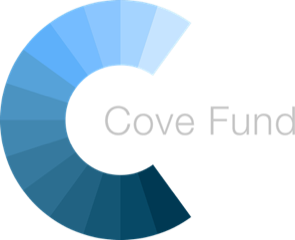When Should Startups Raise Seed Capital? Insights from Cove Fund’s Limited Partners
For founders, timing a seed raise is as much an art as a science. Raise too early, and you risk dilution before proving value. Wait too long, and you may stall growth or miss critical windows. So when is the right time to raise seed capital?
To explore this, we turned to the people who sit on the other side of the table—our own limited partners at Cove Fund. These individuals, many of whom are seasoned entrepreneurs, investors, and operators, offered a range of perspectives that collectively paint a thoughtful picture of what “seed-ready” really looks like.
1. Start the Conversation Before You Need the Capital
Several LPs emphasized the importance of starting early—not necessarily with a formal raise, but with relationship-building. As one put it, “Founders should always be telling their story.” Even if a fundraise isn’t imminent, familiarizing investors with your vision and progress lays the groundwork for future engagement.
Fundraising is rarely instantaneous. The most successful seed rounds often come from relationships cultivated over time, where trust is built before the ask is made. Investors who’ve tracked your progress are far more likely to invest when the time comes.
2. The Right Round for the Right Stage
Not all capital is created equal—and neither are the milestones that justify it. One LP noted, “Each fundraising round is focused on a different set of goals—product-market fit, scaling, etc. Companies are ready to raise when they are ready to address the goals of that round.”
For seed capital, the expectation is often to validate product-market fit, achieve early customer traction, and build the team that can scale. Pre-seed might focus on validating a concept; Series A is typically about scaling a proven model. Founders should be clear-eyed about what they’re raising for—and what they need to prove.
3. Delay Until You Can Show Value
Another viewpoint focused on maximizing leverage: “As late as possible to properly demonstrate the value of the company and shorten the time to liquidity and breakeven.”
There’s merit here. The more traction you can demonstrate—customers, revenues, engagement—the more negotiating power you have. It also derisks the investment for seed funds, improving your odds of raising on favorable terms.
4. Team First, Then Traction
One LP offered a particularly detailed framework: “Team composition is a critical gating factor. Founders must be fully committed, with key individuals in place to execute.”
In other words, no side hustles. Investors want to see founders “all in,” ideally with technical or domain expertise relevant to the problem they’re solving. Equally important is demonstrable progress—an MVP (minimum viable product), early customer feedback, or even a successful pilot. These milestones show that the startup has moved beyond the idea stage and is actively de-risking the opportunity.
5. Sequential Capital: Friends, Family, Then Seed
“After the owners have invested what they can, and then raised from friends and family, then seed capital is appropriate.” This echoes a classic funding progression.
Founders who bootstrap, invest personal capital, and raise from their immediate network before seeking institutional funding send a strong signal of belief and commitment. It also demonstrates scrappiness—a quality investors value highly.
6. Know the Market—and Your Place in It
Finally, several LPs stressed the importance of external validation. “After proving the idea from multiple sources and thoroughly understanding existing competition,” one shared.
Raising institutional capital requires more than a vision—it demands a grounded understanding of the competitive landscape and customer need. Being able to articulate why now and why you is crucial.
Final Thoughts
There’s no one-size-fits-all answer to when a company should raise seed capital. But there is a common thread across all our LPs’ insights: the need for readiness—of team, product, strategy, and story.
At Cove Fund, we don’t expect perfection at the seed stage. But we do look for signs of commitment, clarity, and progress. Whether you’re six months from a raise or knee-deep in diligence, the key is to stay focused on building real value. The right time to raise is when you can demonstrate it.
About Us
Cove Fund is a seed-stage venture capital fund based at UC Irvine’s Beall Applied Innovation, a hub for Southern California entrepreneurs and investors. We invest in early-stage technology and life science companies with differentiated products that address large markets and can achieve major milestones with seed funding.
Since our inception, we have invested over $20 million and are actively deploying capital from our $24 million third fund. If you are a Southern California startup seeking funding — or an investor interested in becoming a limited partner — visit us at www.covefund.com.
